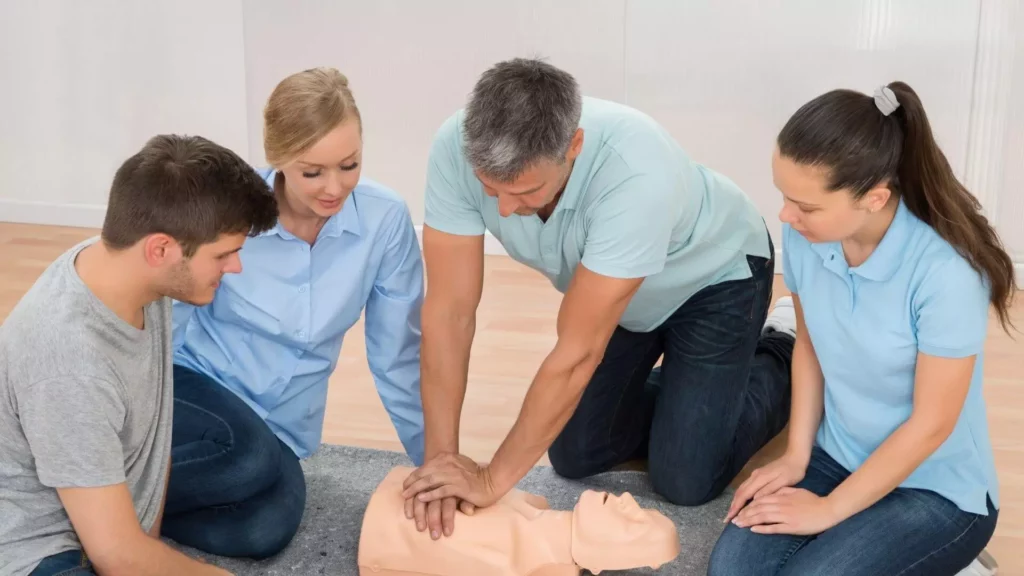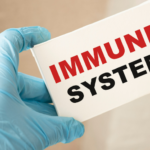The Lifesaving Skill: Why Learning CPR Saves Lives
Introduction
Cardiopulmonary Resuscitation (CPR) is a vital skill that can make all the difference between life and death in emergencies. Did you know that learning CPR can significantly increase the chances of survival for someone experiencing sudden cardiac arrest? In this blog post, we will explore why mastering CPR is important, empowering you with knowledge to save lives when it matters most.

Content
Understanding CPR
Intro: When it comes to responding to emergencies, knowing what CPR stands for and its primary purpose can be crucial. Let’s dive deeper into the world of Cardiopulmonary Resuscitation (CPR) and understand why this life-saving technique is so important.
Cardiopulmonary Resuscitation (CPR) is a term that refers to a group of techniques used in emergency situations. It combines chest compressions with rescue breaths to restore blood flow and oxygenation when someone’s heart or breathing has stopped.
What is CPR?
At its core, Group CPR involves performing external chest compressions on an individual while providing artificial ventilation through mouth-to-mouth or mouth-to-mask resuscitation. These actions aim to mimic the natural functioning of the heart and lungs, keeping vital organs supplied with oxygenated blood until professional medical help arrives.
The Primary Purpose of CPR: Restoring Blood Flow and Oxygenation
During emergencies like cardiac arrest or drowning incidents, time becomes critical as every second counts. The primary goal of performing CPR is to kick-start circulation within the body by manually pumping the heart through chest compressions.
By applying rhythmic pressure on the chest, you help maintain blood flow throughout major organs such as the brain, ensuring they receive much-needed oxygen. In turn, this increases the chances of survival until advanced medical care can be provided.
Remember that during these stressful moments when someone’s life hangs in balance, your knowledge of Group CPR can make all the difference between tragedy and hope.
Importance of Learning CPR
Saving Lives
Did you know that sudden cardiac arrest (SCA) claims thousands of lives each year? Statistics show the alarming number of fatalities resulting from SCA incidents, emphasizing the urgency to take action. Immediate bystander intervention with CPR can be a game-changer in these situations.
Performing CPR promptly after an SCA event significantly increases survival rates. By keeping blood circulating and oxygen flowing to vital organs, CPR buys precious time until professional medical help arrives. This crucial intervention can mean the difference between life and death for someone in need.
Quick Response Time
During an SCA event, every second counts as time plays a critical role in saving lives. Learning proper CPR techniques equips you with the ability to bridge the gap between when an emergency occurs and when medical professionals arrive on scene.
By initiating immediate chest compressions and rescue breaths, you maintain blood flow and oxygenation, sustaining vital functions until advanced medical care is available. Acting swiftly through effective CPR measures can greatly improve outcomes for individuals experiencing cardiac emergencies.
Enhanced Emergency Preparedness
Having knowledge of CPR extends beyond just being prepared for cardiac events; it benefits various situations at home, workplaces, or public spaces where emergencies may arise unexpectedly. Choking incidents or near-drowning accidents are examples where prompt action through resuscitation techniques becomes essential.
With proper training in Group CPR techniques, you gain the confidence to respond effectively during critical moments while waiting for professional assistance to arrive. Being equipped with this skill empowers individuals like yourself to take control during emergencies and potentially save lives around them.
Highlighting Personal Empowerment Through Training
Real-life stories abound about individuals who have successfully performed lifesaving interventions using their knowledge of CPR – becoming true heroes by stepping up in times of crisis. Learning Group C.P.R not only provides practical skills but also instills a sense of personal empowerment knowing that you can make a difference when it matters most.
Conclusion
In times of emergencies, knowing CPR can be the difference between life and death. By learning this vital skill, you become a potential lifesaver, equipped to provide immediate assistance when it matters most. The power to save lives lies within each of us – let’s embrace it through the knowledge of CPR.
FAQs
Is CPR really necessary? Can’t we just wait for medical professionals to arrive?
While professional help is crucial, immediate bystander intervention through CPR can significantly increase the chances of survival. Time plays a critical role in emergencies like sudden cardiac arrest (SCA). Performing CPR helps maintain blood flow and oxygenation until advanced medical care arrives.
Can anyone perform CPR, or do you need specialized training?
Anyone can learn and perform hands-only CPR with proper training. Hands-only CPR involves chest compressions without rescue breaths, making it simpler to administer effectively during emergencies. However, attending a recognized CPR training course provides comprehensive knowledge and practical skills for better outcomes.
Are there any risks involved in performing CPR incorrectly?
When performed correctly on someone who needs it, the benefits of administering CPR far outweigh the risks. Chest compressions may cause minor injuries like rib fractures; however, these injuries are considered acceptable given the life-saving potential of timely intervention.
Does age matter when administering CPR? Should I follow different techniques for adults vs children or infants?
Yes, age matters when performing effective resuscitation techniques. Different techniques are used for each age group – adult, child, and infant – due to anatomical differences. For adults and children aged one to puberty, hands-only compression technique is recommended. For infants under one year old, special care should be taken with gentle compressions using two fingers placed at the center of their chest.

Karen is a health blog author who has been writing about healthy living since 2013. She started her journey by adopting a vegan diet and eating only organic foods, but the more she learned, the more she realized that we should all be eating plant-based diets exclusively. As an expert in nutrition and wellness, Karen blogs to educate readers on how they can live happier and healthier lives through food choices!












